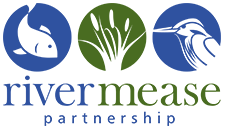River Improvement Project
What is abstraction?
Taking water from a surface source (such as a river, stream or canal) or from an underground source is called abstraction. If you plan to take more than 20 cubic metres (20,000 litres) a day, you are likely to need an abstraction licence from the Environment Agency.
The Environment Agency assesses applications to abstract water against local water availability.
A time limit of 31 March 2026 applies to new abstractions or increases to existing licensed abstraction in the River Mease catchment.
If you want an abstraction licence but are unable to get one because there is no water available in your area, you may be able to enter into an agreement with an existing licence holder. You can agree for them to give you part or all of their water abstraction right permanently or temporarily. This is called the trading of water abstraction rights.
If you already have an abstraction licence, you can agree to give the rights to some or all of that water to someone else, subject to approval from the Environment Agency.
Trade water abstraction rights
There is no guarantee that a trade could be approved, abstraction must be sustainable. Over-abstraction can cause:
- slower river flows which increase the amount of sediment build up and pollutants.
• an increase in water temperatures
• less space for habitats which affects fish and other wildlife
There is no obligation on Severn Trent Water to discharge wastewater into the river.
Often driven by rainfall and how we manage land, diffuse pollution occurs when nutrients, pesticides, faecal bacteria, chemicals and fine sediments are lost from the land into rivers, and groundwater.
Diffuse pollution is often from a range of sources but the effect is cumulative. So what appears to be small amounts of runoff from one field, when added to all the other sources that also feed into the river, can have a big overall effect on water quality.
Many farmers across the Mease are already involved in schemes to protect water quality and to create habitats. Check out some of the projects that have already made a difference.
Tackling diffuse pollution and river restoration is a priority for the Mease catchment. You can get involved today and start making a difference to our area of stunning natural beauty.
The River Mease Partnership recognises the catchment needs to be able to grow and thrive both socially and economically. Creating new development which is environmentally sustainable is an essential element in achieving this.
Nutrient pollution, especially phosphates and nitrates, is an urgent problem for our freshwater habitats and rivers, many of which are internationally important for wildlife. We must tackle this pollution to help meet our legal commitments to restore species abundance.
Under the Habitats Regulations, ‘competent authorities’ such as local planning authorities and the Environment Agency must assess the environmental impact of projects and plans (such as planning applications or local plans) which affect habitat sites. Local planning authorities can only approve a project if they are sufficiently certain it will have no negative effect on the site’s condition.
The nutrient load is created by the additional wastewater produced by the assumed increase in people moving into the area.
One way developers can demonstrate that new projects will not cause additional pollution is through ‘nutrient neutrality’. Natural England leads the nutrient mitigation scheme. This scheme is supported by up to £30 million of funding from Defra and the Department for Levelling Up, Housing and Communities. This involves mitigating the ‘nutrient load’ generated by the population growth due to new housing developments. In the River Mease catchment developers need to have nutrient neutrality solutions and work with the River Mease Partnership to identify additional opportunities to reduce or remove phosphate entering the river.
The River Improvement Project will move the River Mease towards a more favourable status, enabling Local Planning Authorities to progress their Local Plans and applicants to bring forward development in a more sustainable way.
Further advice and information for new developments is available at North West Leicestershire Council’s website.


